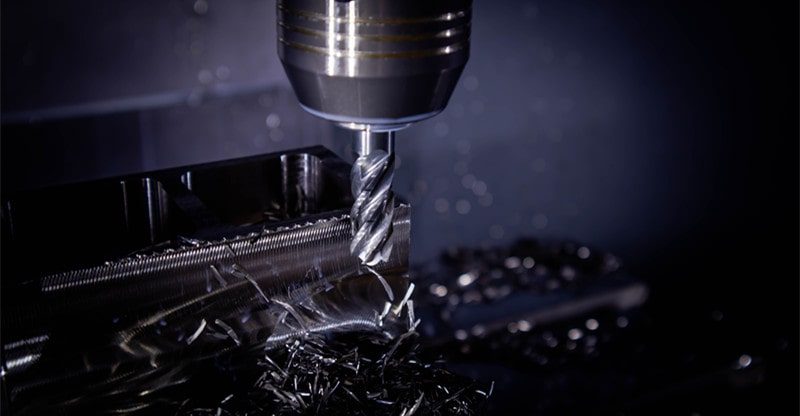Learn What CNC Milling Is & What Is It Used For
Computer numerical control milling or CNC milling is a machining process that utilizes computerized controls and turning cutting tools to gradually remove material from the part and create a custom-made piece or product.
This method is appropriate for machining a broad range of materials, like plastic, metal, wood, and glass, and creating a variety of tailor-made pieces and products. Various capabilities are provided within the framework of the accuracy of CNC milling services, comprising mechanical, electrical, chemical, and thermal processes.
CNC milling, like turning, drilling, and several other machining procedures, is a mechanical machining process. It means that it removes material from the part through automated actions, like the actions of the cutting tools of the CNC milling machine.
How Does CNC Milling Work
The CNC milling procedure functions by the machinery reading coded commands and putting them into action afterward. It all begins with developing a 3D CAD file that represents the final piece. When finished, the design is converted into a computer-readable format.
Then, CAM (computer-aided manufacturing) software sends the design to a CNC machine program, generally in G-code format. Next, it acts by reading the instructions, controlling each move that the machine makes. That copies the CAD design in the selected material with a high degree of efficiency and precision.
Nowadays, CNC milling services offer the creation of high and low volumes of intricate and complex parts utilizing reductive machining technology. Material is removed from a blank part and the CNC milling employs a rotating round tool known as a milling cutter.
Contingent to the type of CNC milling machine being utilized, the machine can cut in various angles and move along distinct axes. The finished piece is always first designed through CAD, (computer-aided design) before it is inputted into the CNC milling machine for manufacturing the end product.
What Does A CNC Milling Machine Do?
A CNC milling machine transforms raw material into a finished product via various methods, either by removing (subtractive manufacturing) material or adding (additive manufacturing) it. The available methods depend on the type of milling machine (e.g., CNC boring mill, CNC bed mill, and horizontal milling machine).
A CNC milling machine produces complex parts for a lot of industries, using subtractive manufacturing technology. The CNC milling machine cuts away pieces of the part, and via 3, 4, or 5 axes, creates the finished piece.
Contingent on the number of axes a CNC milling machine has, the more complex and intricate pieces it creates. The CNC milling machines are utilized by various sectors including medical and aerospace industries for manufacturing complex parts.
What Is CNC Milling Used For
High Quality And Precision
The very essence of CNC machining as a method leaves very little room for mistakes. That is because it functions by a computer-guided program, inputting 3D designs that have been previously developed using CAD (Computer-aided design). Every operation is launched through the machine’s interface.
The machine performs the instructions without requiring any manual input. These automatic processes allow for ultimate accuracy to ensure that even the most limited or complex geometry can be technically handled.
Higher Production Output
The level at which CNC milling machines work means they are capable of high production levels due to the automated work involved. When a part needs to be manufactured in high volume, with each part meeting the same level of uniformity in the context of quality and finish, CNC milling is a reliable and common option. It is especially easy to program and manage a 3-axis machine, reaching high accuracy at a reduced price.
Less Labor-Intensive Process
Utilizing a CNC milling machine considerably minimizes the amount of labor included in the process of production. At maximum capacity, the tools employed in a CNC milling machine can turn at thousands of RPM (revolutions per minute), resulting in great production output. There are no manual processes that can achieve a comparable output.
Furthermore, the simpler the design is, the less human input is required. For instance, if there is a complex design that demands the tool to be moved throughout the process, that will involve machinists to ensure the process is finished securely and precisely.
Guaranteed Consistency
CNC machining tools are designed and built for cutting away the parts with the highest levels of precision. The movement is controlled by the computer program, meaning every single part is manufactured with the same level of precision. On a larger scale, parts can be manufactured in high volume, with a guarantee that all the finished parts will have the same quality and finish.
Final Words
By now the process of CNC milling and its use cases are probably more clear to you. So, if you ever need to create high-quality, accurate, and uniformed parts, then CNC milling is the right method.



